
For the last couple of months I’ve had the opportunity to explore the grounds and wider estate at Marchmont House, hunting for trees and foraging for images to feed into the development of my commissioned works.

For the last couple of months I’ve had the opportunity to explore the grounds and wider estate at Marchmont House, hunting for trees and foraging for images to feed into the development of my commissioned works.
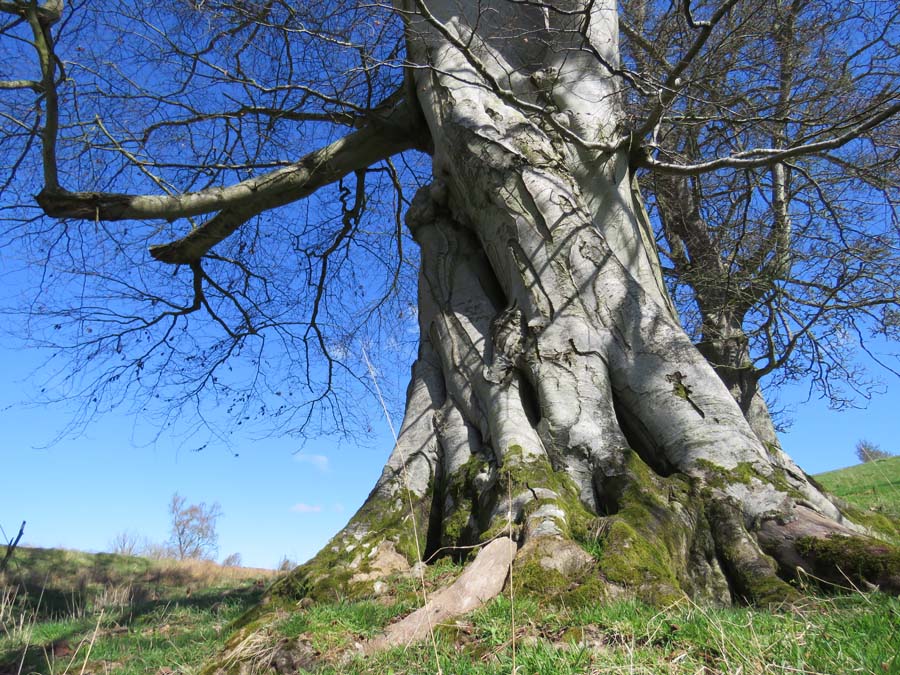
I was on the hunt for ghosts. Not the most obvious of days for a ghost hunt – bright spring sunshine, birds singing their little hearts out and all the greenness getting ready to burst. However, I was excited by the possibilities the day’s light held for photography. I like to take reference photos in both clear sunshine and soft overcast light, as the combination helps me understand the tree’s form, along with drawing as the primary tool. Today was a day for sharp contrasts.
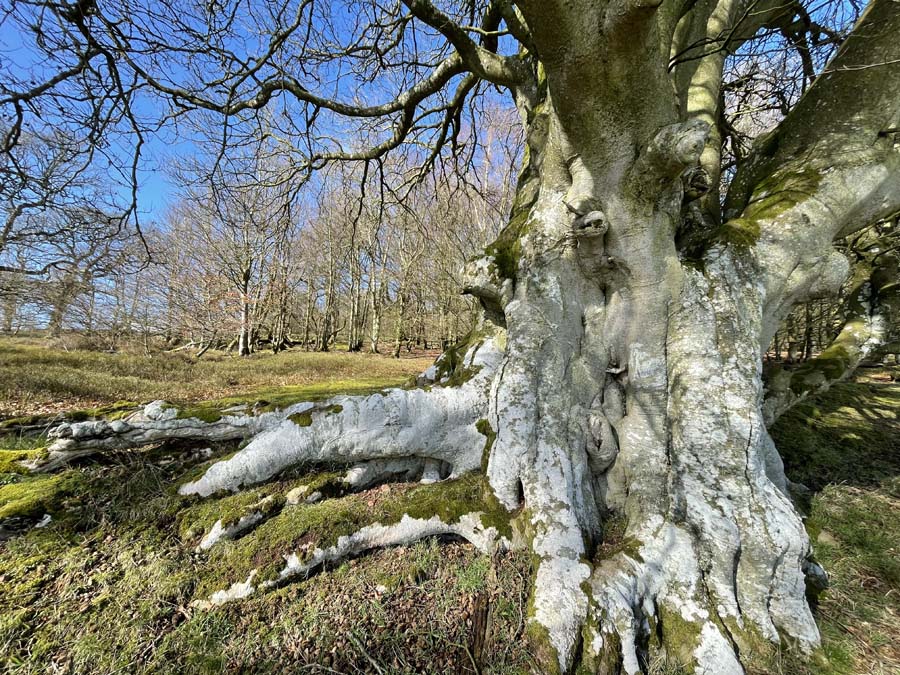
I do love a boundary beech. They have a kind of pioneer spirit about them – often grown in exposed positions, they need to be strong. Many Scottish ones like this were planted on stone dykes or banks, with their root systems tracking along a line on either side, creating a wooden wall effect.
When I was first commisioned to make charcoal drawings for the Marchmont collection, I was given a map which owner Hugo Burge had annotated with some of his favourite estate trees.
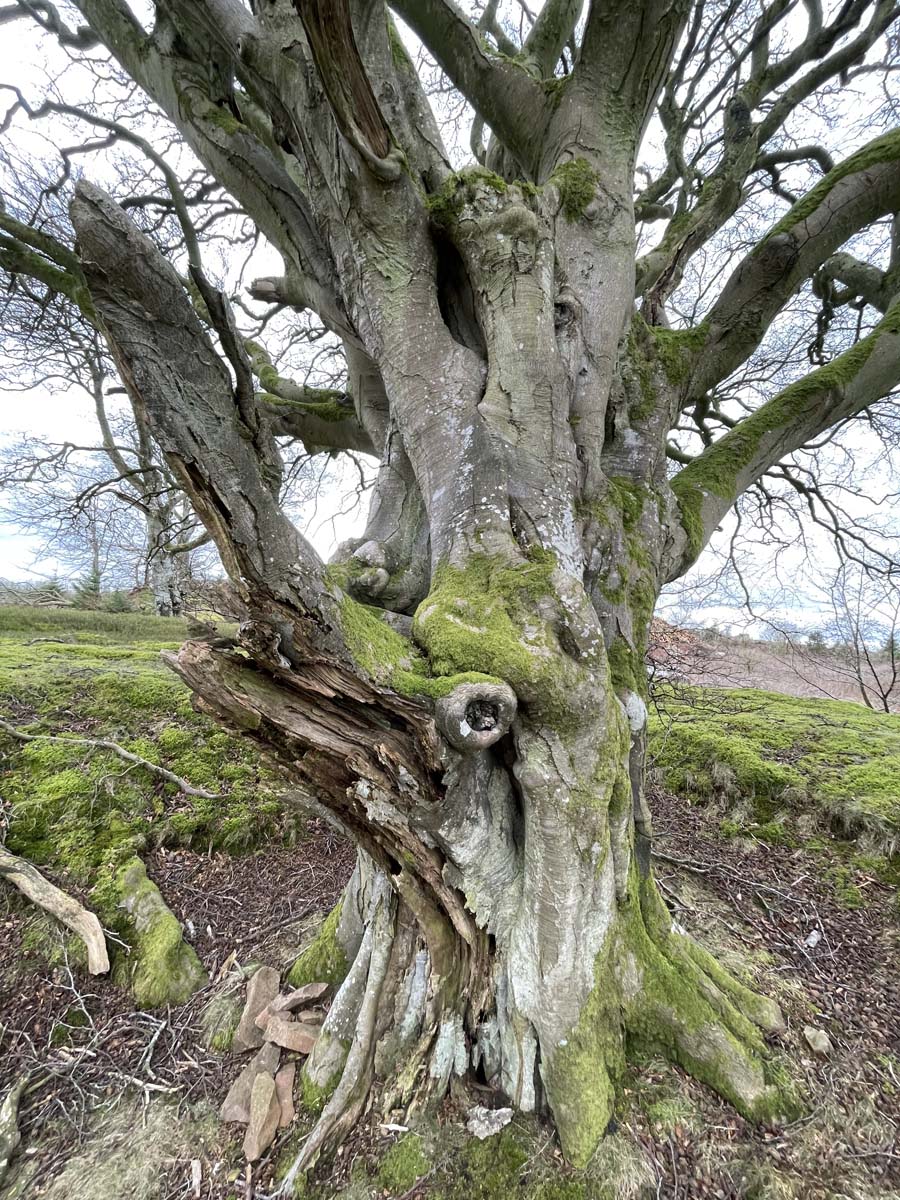
On one of my research trips to the Scottish Borders, Hugo’s map guided me to a cluster of rather mangled beeches at the edge of an old quarry.

On the way home from my Derbyshire drawing trip I visited Little Moreton Hall, a Tudor timber building near Congleton in Cheshire, managed by the National Trust.
If you like old buildings and enjoy the sensation of stepping back in time to past ways of living, you’ll be blown away by this place – I’ve never seen anything quite like it.
Buoyed by the energy of the turning of the year, I’ve decided it’s about time I read more. I have loads of books and an endless appetite for learning, so this shouldn’t be difficult…
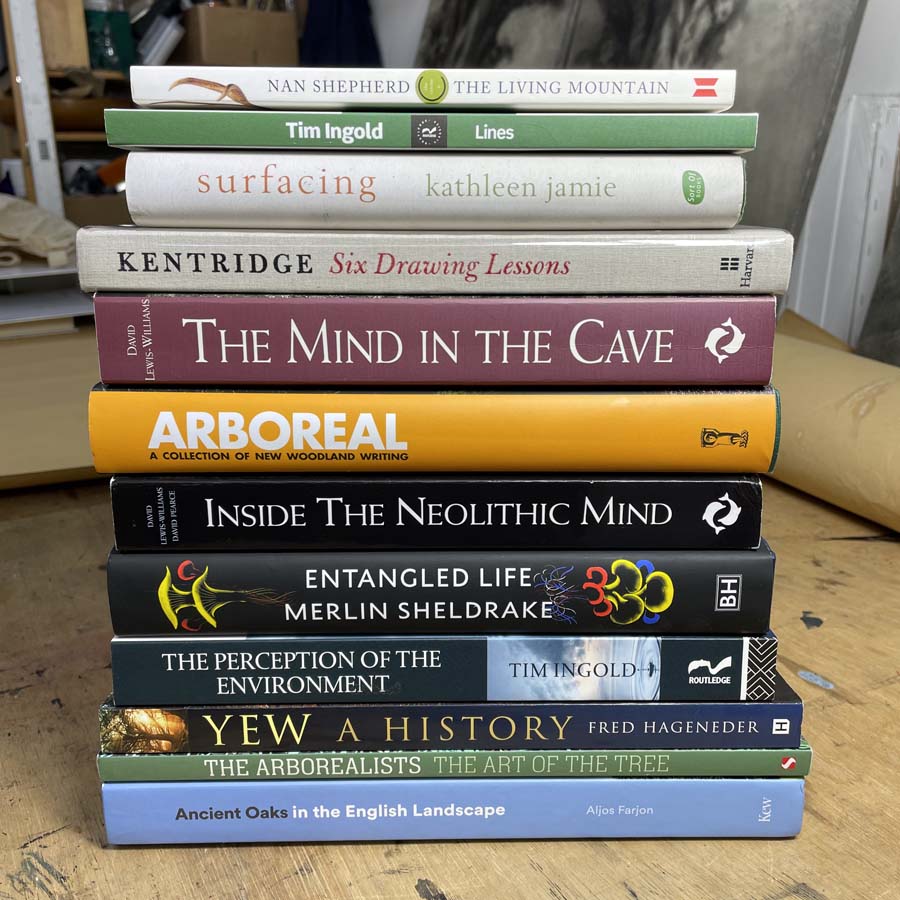
I used to read avidly. Reading non-fiction was a favourite way to relax and expand my mind at the same time. Anything about the natural world, science, history, neurology, psychology, philosophy and art of course. Then something changed – as I’ve got older I’ve got less able to focus late at night which used to be my usual reading time.
It’s been an intense few months in my studio, while I’ve been immersed in developing a new way of working in oil paint. New materials require trials and experiments, so I’ve been doing my best impression of a methodical person, testing all the variables of substrates, grounds, paint brands, mediums, mark-making tools and finishes. The time (and money) invested is now paying off and I’ve found combinations which are enabling me to say what I want to in paint. I now know what I like, don’t like and hate with a passion – this will make it so much easier to express myself in new but hopefully still familiar ways.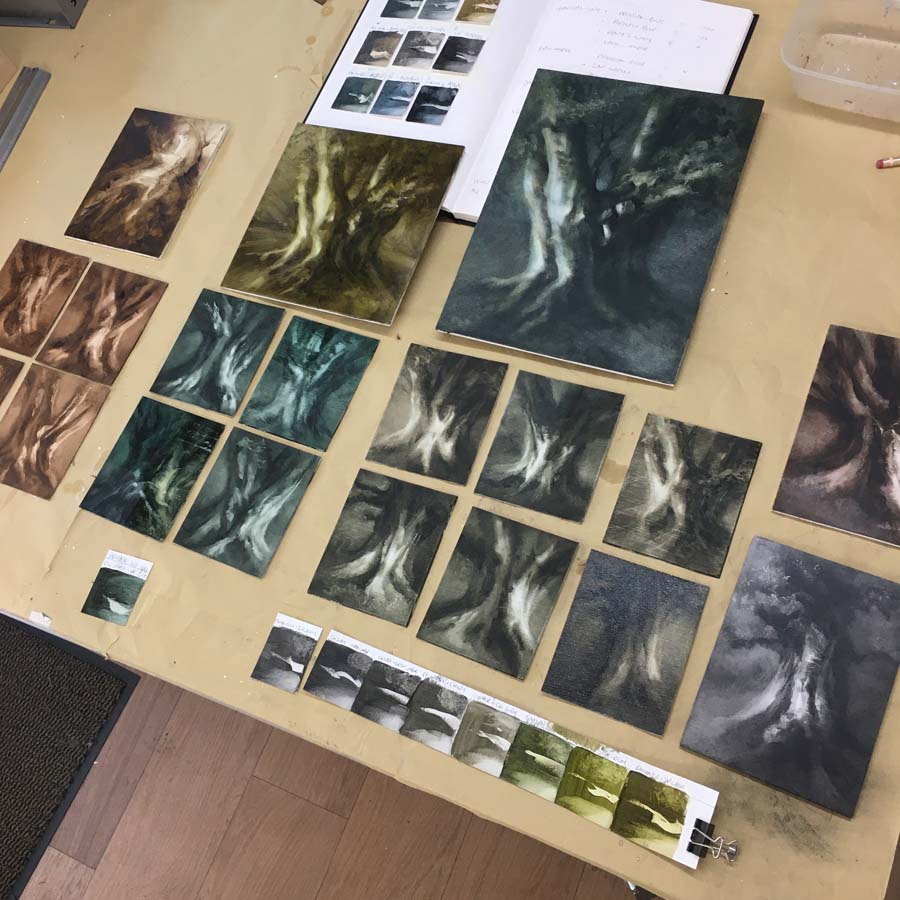
I’ve bought a lot of new paints and tried a LOT of combinations. Earthy colours and natural pigments like slate or oxides have appealed most to me from these trials. I’ve been particularly excited to discover a ready-made oil paint using charcoal as the pigment, since I realised making my own in any amounts would take more time than I’d like.
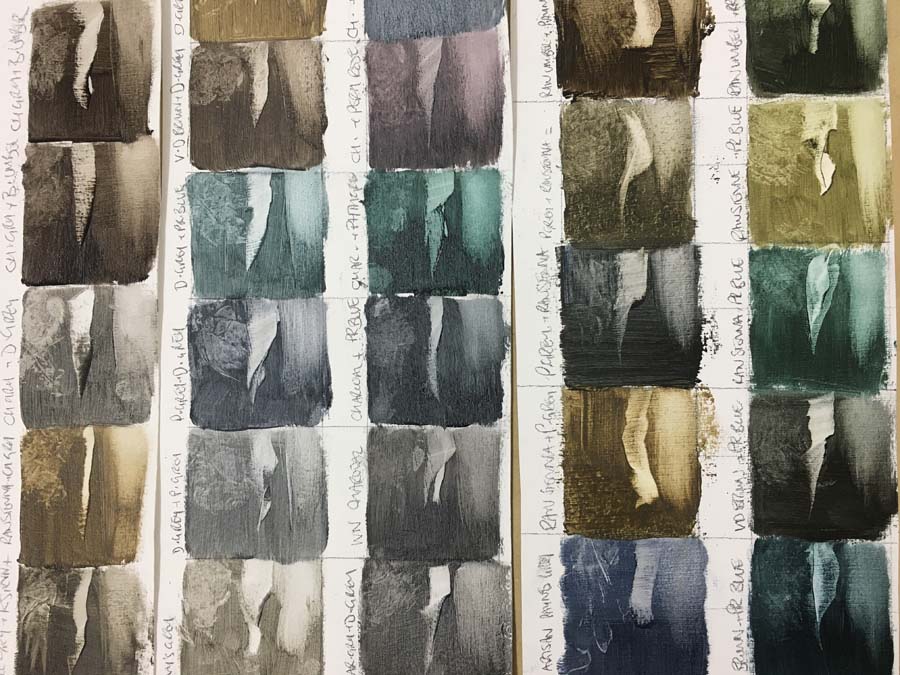
I’ve decided to restrict the works to an almost monochrome palette, using colours which suggest ‘beechness’ but don’t attempt to depict it. I plan to use subtle glazes to deepen the colours and enhance their glow.
I approach my charcoal works as if I’m drawing with light, so it made complete sense to work with paint in the same way. Reductive painting simply means removing paint to create lights rather than adding it to create darks – it’s a very tonal technique with a broad range of mark-making possibilities.
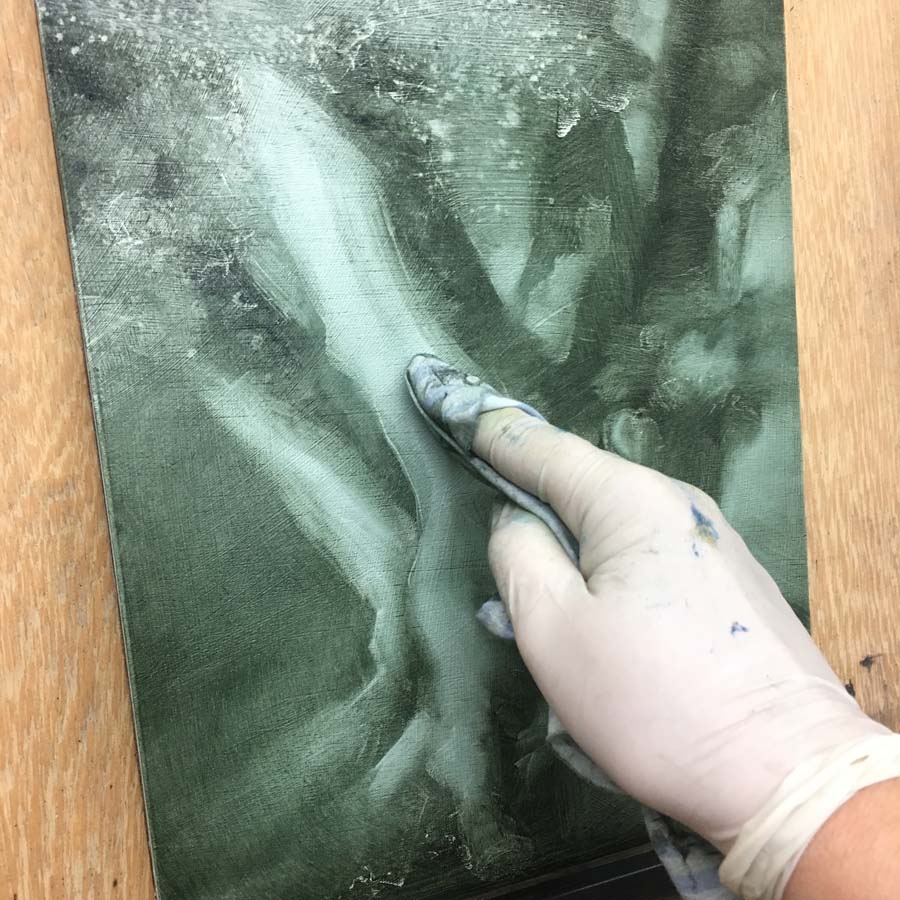 It also means I get to paint with my fingers, so I’m still in that particular comfort zone! Guiding me on the studio wall are images of lithographs by Eugène Carrière, a master of ethereal monochrome work and images by early Pictorialist photographers which remind me to keep those tones simple whenever I get too wrapped up in details.
It also means I get to paint with my fingers, so I’m still in that particular comfort zone! Guiding me on the studio wall are images of lithographs by Eugène Carrière, a master of ethereal monochrome work and images by early Pictorialist photographers which remind me to keep those tones simple whenever I get too wrapped up in details.
Here’s what my reductive painting technique looks like in action…
and here’s a quick view of the paintings drying between layers…
As they’ve been gathering in the studio, the word ‘Grounded’ has linked itself with this new series – in my mind it seems to sum up both the qualities of the trees they are inspired by and my reaction to being in their presence.
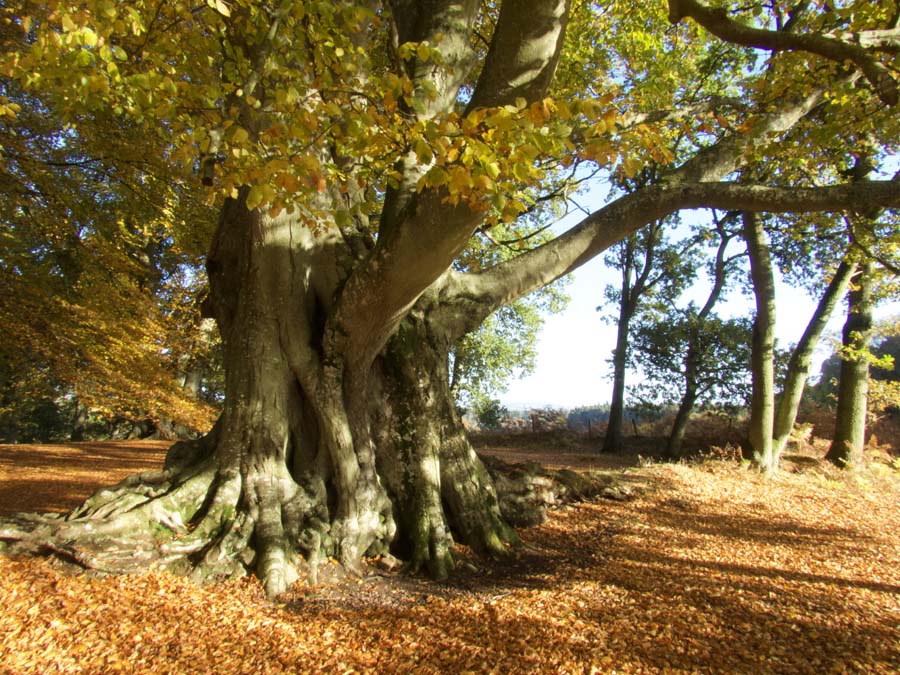
These old veterans are relics of a former landscape in an ancient woodland at Kinclaven, Perthshire. Massive, stoic and stunningly beautiful, they’ve given me enough ideas to keep me working through whatever the winter brings.
I’ll be continuing work on my ‘Grounded’ series over the next couple of months, in preparation for my solo show at Linlithgow Burgh Halls next February. If you enjoy seeing snippets of work in progress, I also post video clips on Instagram – come and say hello there.
For the last 100 days I’ve been studying light and dark in art, ‘chiaroscuro’ being the arty Italian word for this – loved by the old masters and still well used by contemporary painters, photographers and film makers. 100 is such a satisfying number and I’m surprised and delighted to have been able to keep going till the end – if you’d like to see the complete works first head here, or if you’re interested in the debrief, read on…
It would be hard to choose a favourite day but there were some that stick in my mind as particularly rewarding, either because of the mastery of the original artist, the way my materials behaved, or just the way the image chimed with my mood at the time. Incidentally, my favourite title of a work I copied was Joseph Wright of Derby’s ‘Two boys fighting over a bladder’ – bold!
Here are a few special ones:





In terms of my own art, above all I’ve learned about what excites me visually and what I want to continue to pursue. Emerging forms, dark ambiguity, subtle gradation, strong composition and tonal arrangement and a monochrome palette are all part of the recipe for future work.
The daily practice was sometimes a struggle for such a lengthy period, but I’m more likely now to embark on another long term project than I thought in January. It’s so good to see other people’s projects and follow their journeys, and sharing online definitely helps to keep up the motivation. If you’re thinking of giving it a go yourself, I’d highly recommend it – here’s the project page to help you on your way.
Read how the project started here, view the full gallery here or check out my weekly project updates on Instagram.

Reflections on ‘European Wood Pasture’, a UKEconet international conference at Sheffield Hallam University, 4th – 7th September 2018…
Fellow artist Anne Gilchrist and I attended the three day event in Sheffield and presented some of the work we have made in response to Dalkeith Oaks, including drawings, paintings and our book ‘Dead Wood and New Leaves’. We both enjoyed the connections and conversations sparked by our stand, provoking new ideas to feed our creative processes.

As always at UKEconet events, the speakers were varied and informative, giving a wide range of perspectives on the subject. Details of the conference and presenters can be found here.

From Nicklas Jansson’s presentation on a unique and threatened oakwood landscape in Turkey
As an artist I am of course interested in images of trees and woodlands, but I really value the opportunity to learn about the science, history and ecology of these landscapes too – I have a need to understand the cultural and ecological significance of the trees which are aesthestically interesting to me. What is striking is that the researchers I hear and speak to also connect with trees and woods aesthetically and emotionally as I do.

From the presentation by Jeremy Dagley, Head of Conservation at Epping Forest, picturing the late Oliver Rackham with an Epping pollard.
Since it was Anne’s first time in Sheffield we spent one evening exploring Padley Gorge in the Peak District, where gnarly oaks grow through gritstone boulders in a steep valley. It’s not a wood pasture but is a fantastic ancient woodland site with some stunning trees.


